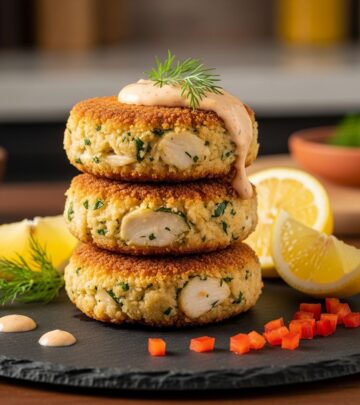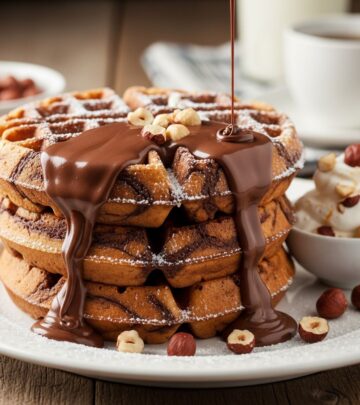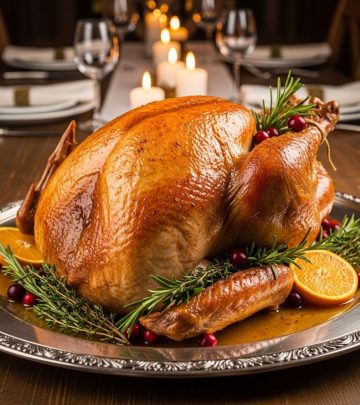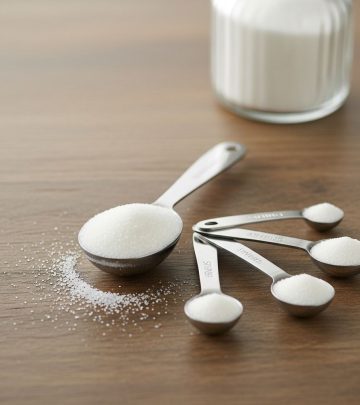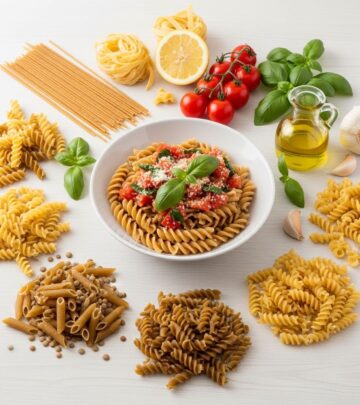Classic Shortbread Cookies: A Timeless Recipe for Buttery Perfection
Discover a simple, foolproof recipe for classic shortbread cookies that deliver perfect buttery taste with minimal ingredients.

Classic Shortbread Cookies
Shortbread cookies are the embodiment of simplicity and elegance in baking. With only a handful of basic pantry ingredients—butter, sugar, and flour—these cookies transform into delicate, crisp, melt-in-your-mouth treats that have enchanted cookie lovers for centuries. This classic shortbread cookie recipe is pure, straightforward, and celebrated for its buttery flavor and tender crumb. Learn how to master shortbread with practical tips, storage guidance, and ideas for creative variations, perfect for holiday baking or whenever you crave a classic treat.
What Makes Shortbread Cookies Classic?
Shortbread has a rich Scottish heritage and stands out for its minimal ingredients. Its unique texture—crispy yet tender—and delicate richness are the results of a high proportion of butter to flour. The absence of leavening agents ensures the cookies remain dense and crumbly, just as tradition intended. They’re as delightful with a cup of tea as they are dressed up for festive occasions or gift-giving.
Ingredients for Classic Shortbread Cookies
This classic recipe uses only three basic ingredients, but each plays a vital role in flavor and texture:
- Unsalted butter: Choose the best quality butter you can find; European-style butters with higher fat yield richer flavor and better texture.
- Powdered sugar: Gives the cookies a tender, melt-in-your-mouth crumb and subtle sweetness.
- All-purpose flour: Provides the structure, but don’t overwork it to keep the shortbread light.
- Optional: A pinch of fine sea salt, and a touch of vanilla extract for added depth.
| Ingredient | Measurement |
|---|---|
| Unsalted butter (room temperature) | 1 cup (230g) |
| Powdered sugar | 2/3 cup (80g) |
| All-purpose flour | 2 1/4 cups (295g) |
| Fine sea salt (optional) | 1/2 tsp |
| Vanilla extract (optional) | 1 tsp |
Step-by-Step: How to Make Classic Shortbread Cookies
Achieving perfect shortbread is less about complexity and more about attention to detail. Here’s a simple, reliable method to get classic results:
- Cream the Butter and Sugar
In the bowl of a stand mixer, combine the room-temperature butter and powdered sugar. Beat on medium speed until pale, light, and fluffy. If using salt and vanilla, add them now and beat briefly to combine.
- Add the Flour
With the mixer on low, gradually add the flour, mixing until just combined. Scrape down the sides of the bowl as needed, and mix only until the dough comes together—overmixing leads to tough cookies.
- Shape the Dough
Turn the dough out onto a lightly floured surface. Gently shape it into a disk, wrap tightly in plastic or parchment, and chill for at least 30 minutes. Chilling helps the cookies retain their shape when baking and intensifies the flavor.
- Preheat the Oven
Heat your oven to 325°F (165°C). Line a baking sheet with parchment paper to ensure even baking and easy removal.
- Roll and Cut
On a lightly floured surface, roll out the chilled dough to about 1/2-inch thickness. Use a sharp knife or cookie cutter to cut the dough into desired shapes—rectangles, squares, or classic rounds. Prick the tops with a fork for the signature look and to allow steam to escape.
- Chill Again
Place the cut cookies onto the prepared baking sheet, spacing them about an inch apart. Chill in the freezer or refrigerator for 10–15 more minutes before baking. This step ensures the cookies won’t spread and will hold their shapes perfectly.
- Bake
Bake for 18–25 minutes, depending on size and thickness, until the edges are set and just barely golden. Classic shortbread should remain pale on top—avoid overbaking for best texture.
- Cool and Serve
Allow cookies to cool on the baking sheet for about 5 minutes, then transfer to a wire rack. The cookies will continue to set as they cool. Enjoy warm or at room temperature.
Tips for Perfect Shortbread Cookies
- Use cold, high-fat butter for a crumbly, flaky texture and true buttery flavor.
- Don’t overwork the dough: Mix until just combined, and handle gently when shaping.
- Chill the dough: This is crucial for minimal spreading and sharp edges.
- Weigh ingredients for accuracy, especially flour and butter.
- Avoid overbaking: Shortbread is ready when it’s pale golden on the bottom and set at the edges; the tops should not brown.
- Customize with flavorings: A dash of vanilla, citrus zest, or even a bit of ground cardamom adds subtle character without sacrificing the classic simplicity.
Alternative Shapes and Serving Ideas
Shortbread cookies are delightfully versatile. Here are some ideas for shaping and serving:
- Classic fingers or bars: Roll dough into a rectangle, cut into narrow bars, and prick tops with a fork.
- Rounds: Use a biscuit cutter or glass for clean, circular cookies.
- Squares: Roll dough into a square slab and slice evenly for a neat, professional look.
- Molded or stamped: Press dough into a tart pan or shortbread mold for an elegant, decorative presentation.
Storage and Make-Ahead Tips
- Storage: Cool cookies completely, then transfer to an airtight container. They will keep at room temperature for 5–7 days.
- Freezing (Dough): Shortbread dough can be wrapped tightly and frozen for up to 2 months. Thaw in the refrigerator before rolling and baking.
- Freezing (Baked Cookies): Baked shortbread freezes beautifully for up to 1 month. Layer with parchment in a sealed container to avoid sticking.
- Gift-giving: Shortbread’s durability and flavor make it ideal for shipping and holiday cookie exchanges.
Additions and Variations
Classic shortbread is perfect on its own, but you can personalize your batch with creative additions:
- Lemon or orange zest for a touch of citrus brightness.
- Chopped chocolate or mini chips for indulgence.
- Finely chopped nuts: Try pecans, almonds, or pistachios.
- Herbs like lavender or rosemary for a sophisticated twist.
- Half-dipped in melted chocolate for holiday flair.
- Dust with turbinado or sanding sugar before baking for sparkle and a sweet crunch.
Serving Suggestions
Shortbread’s understated charm makes it perfect for a variety of occasions:
- Pair with afternoon tea or coffee for a classic treat.
- Serve alongside fruit compotes, fresh berries, or ice cream.
- Wrap in cellophane or tuck into decorative tins for a thoughtful edible gift.
- Feature on festive cookie platters for holidays, weddings, or showers.
Problems and Solutions: Troubleshooting Shortbread
| Issue | Probable Cause | Solution |
|---|---|---|
| Spreading too much | Butter too warm; dough not chilled | Chill dough thoroughly before baking |
| Tough or dense texture | Overmixed dough; too much flour | Mix until just combined; weigh flour accurately |
| Pale and dry | Overbaked | Remove from oven when edges turn golden |
| Crumbly and won’t hold shape | Not enough butter; dough too cold | Ensure proper butter ratio and bring dough to workable temperature briefly |
| Too sweet | Too much sugar | Use a digital scale for precise measurement |
Frequently Asked Questions (FAQs)
Q: Can I make shortbread dough ahead of time?
A: Absolutely. Prepare the dough up to 48 hours ahead and store wrapped in the refrigerator, or freeze for up to 2 months.
Q: What’s the difference between shortbread and sugar cookies?
A: Shortbread contains a higher ratio of butter to flour and typically no eggs or leaveners, resulting in a crumblier, richer texture than sugar cookies, which are sweeter and softer.
Q: Can I use salted butter?
A: Yes, though omit any added salt in the recipe to prevent over-salting. The flavor profile will be slightly different but still delicious.
Q: Why should I chill the dough twice?
A: Double chilling (before rolling and after cutting) ensures clean shapes, crisp edges, and prevents spreading in the oven for perfectly uniform cookies.
Q: How do I know when shortbread is done baking?
A: The edges will appear set and just starting to turn a light golden color—the centers should remain pale for the classic texture.
Q: Can I flavor my shortbread?
A: Yes! Add citrus zest, extracts (like almond or vanilla), herbs, or nuts for delicious personal twists on the traditional recipe.
Expert Baking Tips for Success
- Invest in a kitchen scale: Precision matters for baking consistency and texture.
- Rotate your pans: For even baking, turn the baking sheet halfway through the bake time.
- Cool completely: Shortbread firms up on cooling; shifting cookies too soon may cause crumbling.
- Experiment with shapes: Use tart pans, pie plates, or molds for visual variety.
- Portion sizes: Smaller cookies bake more evenly and are easier to serve for gatherings or gifting.
Conclusion: The Everlasting Appeal of Shortbread
Classic shortbread cookies are time-honored for a reason: their crisp, buttery bite is the definition of simple perfection. With minimal ingredients and intuitive technique, anyone can produce bakery-quality cookies at home. Whether you enjoy them unadorned or dressed up with your favorite mix-ins, shortbread’s appeal never fades. Bake a batch for the holidays, teatime, or as an everyday indulgence—you’ll find this classic recipe is one you’ll return to again and again.
References
- https://www.hummingbirdhigh.com/2021/12/my-best-shortbread-cookie-recipe.html
- https://bakingamoment.com/shortbread-cookies/
- https://smittenkitchen.com/2021/04/classic-shortbread/
- https://indecisionandcake.com/2018/12/classic-shortbread-cookies/
- https://www.101cookbooks.com/classic-shortbread-cookies/
- https://abeautifulmess.com/classic-shortbread-cookies/
- https://abeautifulmess.com/christmas-cookies/
- https://abeautifulmess.com/butter-cookies-6-ingredients/
- https://www.youtube.com/watch?v=YOAvWmDDoXo



